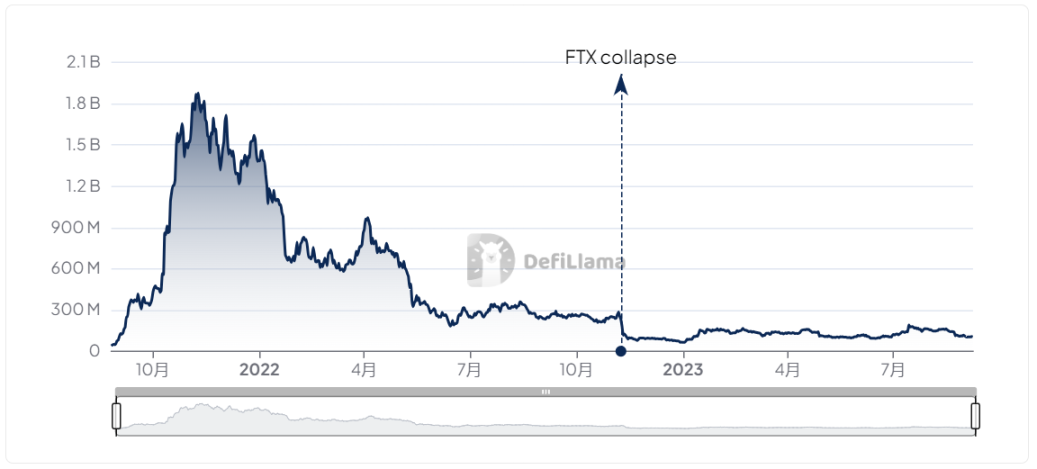Over 70% of SOL is staked. Why hasn't Solana been able to take off with liquid staking?
9月 19, 2024 04:08:37


Original Title: Liquid staking is a huge opportunity on Solana. Why aren't more doing it?
Original Author: Aleks Gilbert, DL News
Translation: Felix, PANews
Liquid staking is the largest sub-sector of Ethereum, holding the largest share, and the share of collateral used in DeFi protocols on other blockchains is rapidly increasing.
Developers and investors in the Solana ecosystem hope for the same.
Ethereum, Solana, and other blockchains that rely on proof-of-stake technology allow users to lock (or stake) their tokens to earn certain yields.
These tokens are essential for performing complex yet critical transaction ordering and validation tasks on blockchains using proof-of-stake technology.
Although staked tokens are effectively locked, liquid staking protocols issue redeemable derivative tokens at a 1:1 ratio, allowing users to take advantage of the staking yields on the blockchain (5% for Ethereum, 7% for Solana) while also using them in other DeFi protocols for additional profits. This is referred to as "liquid staking derivatives" (LSD), but the term has not been actively mentioned by project teams, possibly out of concern for regulatory scrutiny.
Over 70% of SOL tokens on Solana are delegated to individuals, businesses, and protocols that use them to order and validate transactions. However, less than 3% of these are delegated to projects using liquid staking tokens (LST).
Ben Chow, founder of Solana protocols Meteora and Jupiter, stated that out of over $9 billion in staked SOL, only 3% is LST. "We have done a lot of work to increase the adoption of LST and unlock this capital, which would greatly enhance TVL and trading volume."
Lucas Bruder, CEO of Jito Labs, agreed. "This is a huge opportunity to unlock the remaining 97% of staked assets on the network. I believe no LST protocol has figured out the right marketing and narrative yet, and we are excited to try and find the answer."
If this situation changes, it could significantly alter the DeFi ecosystem on Solana. But it's easier said than done.
Low Risk
According to data compiled by anonymous analysts at venture capital firm Dragonfly, Ethereum transitioned to proof-of-stake technology (PoS) about a year ago, with only one-fifth of ETH (approximately 26 million) staked.
This is negligible compared to other blockchains that have used proof-of-stake technology from the start, such as Solana.
But the difference lies in liquidity.
On Ethereum, one-third of the tokens are delegated to the liquid staking protocol Lido. According to data from research firm Rated, nearly 40% of ETH has been deposited into various liquid staking protocols on Ethereum.
Meanwhile, according to Solana Compass data, less than 3% of SOL is deposited into Solana's liquid staking protocols.
According to data platform Spire, among the "staking whales" on Solana, there are 1,651 individuals who have staked at least 5,000 SOL, with only 152 holding liquid staking tokens.
In May, Solana co-founder Anatoly Yakovenko expressed his frustration on Twitter (now called X). "The proportion of SOL in liquid staking and DeFi is very small," he wrote. "We need a collective effort from the entire industry to change this."
"Additional Risks"
Alex Cerba, a core contributor to the liquid staking protocol Marinade, stated that a survey of SOL stakers revealed two reasons for the relatively low usage.
Marinade is the largest liquid staking protocol in the Solana ecosystem and issues the liquid staking token mSOL.

Measured by the total value of cryptocurrency deposits, Marinade is the largest liquid staking protocol on Solana.
The first is the potential tax implications of staking. When users deposit SOL and receive liquid staking tokens, is this a taxable event? When exactly do they pay taxes on the earnings from staking tokens?
Secondly, Solana was built to make staking simple, efficient, and risk-free. However, stakers do not always believe that the additional yields from Solana DeFi are worth the effort and risk, as it requires delegating millions of dollars to third-party built protocols, which carries certain risks.
Cerba stated during the survey: "I don't get corresponding yields in DeFi because to achieve a 9% annualized yield, I have to take on additional risks with mSOL. Meanwhile, I can just stake to get a 7% annualized yield without any smart contract risks."
Kel Eleje, a research analyst at Messari, agreed. Eleje noted that validators representing user interests are usually free. Additionally, users can withdraw their stakes within two days, while those holding ETH need two weeks. "It essentially feels like a lower-risk liquid staking," Eleje said. To this end, Marinade recently launched its version of Solana's built-in staking service—Marinade Native. We hope that those who have already staked SOL can use it and eventually transition to using Marinade for liquid staking. According to data from DefiLlama, the number of new liquid staking protocols Jito and BlazeStake surged this summer.

The liquid staking protocol Jito has rapidly developed this summer.
Eleje attributed this growth to airdrop speculation and the popularity of its liquid staking tokens on MarginFi, which is also an increasingly popular lending protocol.
But Bruder stated that users may be attracted by innovation. "When you look at the usage of jitoSOL in DeFi, you find that the usage rate is much higher than other LSTs."
Ethereum "A Bit Ahead"

The liquid staking protocol BlazeStake has rapidly developed this summer.
If another 4% of staked SOL were staked through protocols like Marinade or Jito, the total value of cryptocurrency in Solana DeFi would double. However, Cerda is unsure if Solana is ready. "Some people view this matter a bit naively, thinking that there is only so much capital flowing into DeFi as an opportunity. Moreover, there are currently very few places to deposit significant DeFi funds on Solana." Solana DeFi needs to grow to handle a large amount of liquid tokens, which raises the chicken-and-egg question. You need the operation of DeFi protocols and more use cases, with larger volumes, to essentially absorb all the capital. And these are areas where Ethereum is ahead.

Related Projects
Latest News
10月 10, 2025 20:09:32
10月 10, 2025 20:07:16
10月 10, 2025 20:01:33
10月 10, 2025 19:59:04




















